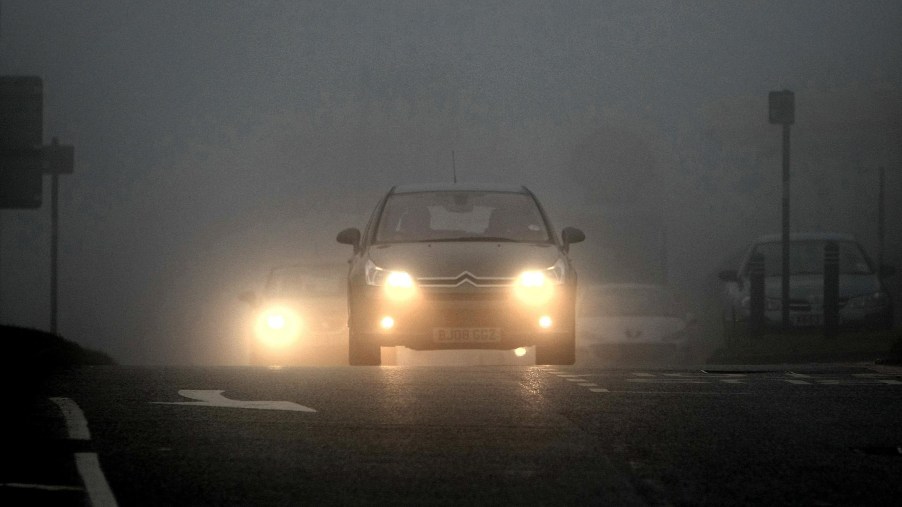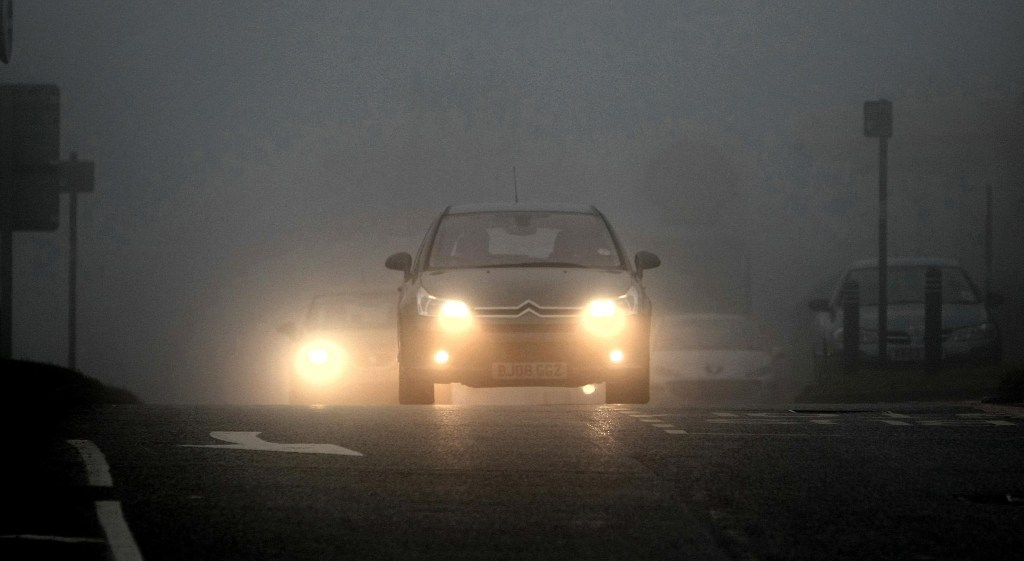
Do Fog Lights Really Help You See Through Fog?
Whether you plan on upgrading to LED headlights or sticking with halogens, your car’s lights are vital accessories. But as bright as they’ve gotten in modern times, trying to drive through a foggy night can still leave you blinded. Given their name, you would expect fog lights to be the perfect solution. But do they really work that way?
Fog lights vs. auxiliary lights
First, a bit of clarification.
Fog lights are sometimes lumped in with auxiliary car lights, Advance Auto Parts reports. Technically, the latter term refers to lights beside the headlights that improve visibility in certain driving conditions, TireRack explains. Off-road light bars, for example, are auxiliary lights. So are driving lights, which are more like off-road spotlights, HCDMag explains. And fog lights are, too.
But what makes a specific light a fog light? Once upon a time, the light’s yellow color was actually a determining factor, Lifewire reports. While hazy and yellowed headlights offer poor performance, a deliberately yellow light cuts down on glare and improves definition, Streetside Garage reports. This is especially helpful if you’re driving through rain, snow, or, yes, fog.
Admittedly, the scientific community is somewhat divided on this topic, The Drive reports. And today, with both white and yellow lights available, the color choice is mostly about aesthetics, The Drive reports. However, know that not every state’s vehicle codes allow yellow fog lights, Roadshow reports.
So, if color isn’t the distinguishing factor, what is? The same things that explain why fog lights do, in fact, help in foggy conditions: placement and beam spread.
Fog lights are beneficial—if they’re used and positioned correctly
As we previously stated, fog lights are auxiliary lights. They’re meant to supplement the headlights, not replace them entirely, YourMechanic explains. And just like your headlights, they need to be aimed correctly for maximum efficiency.
Driving through fog or mist can be both annoying and dangerous because the water droplets in the air reflect the light back. This gets worse if you try to use your high beams, Car and Driver reports. Which is where fog lights come in.

Fog lights are mounted low on the bumper and aren’t quite as powerful as your car’s headlights. But because of their position, they illuminate the road, not the water particles, Autoblog explains. And though they don’t project as far, their beam is flatter and wider so you see more of the road.
Fog lights aren’t meant just for fog, though. Heavy rain and snow also cut down on visibility and increase headlight glare for the same reason, Autoblog reports. Just don’t use them on clear nights—you’ll just dazzle oncoming traffic, Car and Driver reports.
What if you don’t have them and it gets foggy?
Although rear fog lights are mandatory in Europe, neither they nor the front ones are mandatory in the US, Car and Driver reports. Officially, the NHTSA considers them to be “’ supplementary equipment,’” the New York Times reports. Though it’s equipment that’s starting to disappear from option lists with the rise of daytime running lights, lidar, and infrared sensors.
But what if you get caught in a heavy fog without DRLs, advanced sensors, or fog lights? For one, don’t turn your hazard lights on, but make sure your low beams are on. Next, slow down, don’t pass anyone or follow too closely, and keep to the right side of the road, Autoblog explains. And get rid of any other distractions.
Follow more updates from MotorBiscuit on our Facebook page.


